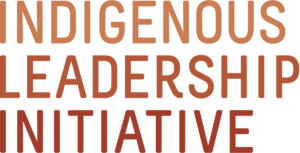Building Back Better: Indigenous Stewardship Key to More Resilient Economy
Forests managed by Indigenous Nations have a pivotal role to play in helping Canada build a more sustainable economy in the wake of the pandemic. These forests capture and store vast amounts of carbon. The Great Bear Lake watershed alone—managed by the Sahtúgot’ine Dene in the Northwest Territories—holds the equivalent of 34 years’ worth of Canada’s industrial emissions.
Ensuring forests like these stay healthy creates jobs and long-term prosperity in communities across the north. It also helps Canada meet international climate and conservation commitments.
“We can talk about restoration and planting new trees,” said Valerie Courtois, director of the Indigenous Leadership Initiative, at a recent roundtable on green recovery, hosted by Corporate Knights. “But first and foremost, we have to keep [the carbon] in the land.”
The roundtable, “Building Back Better with Forests,” was part of a series produced by Corporate Knights asking thought leaders from several sectors to discuss how Canada can create a stronger, cleaner, more resilient economy.
The Boreal Forest in Canada provides one of the most powerful nature-based climate solutions on the planet. It holds the equivalent of up to 36 years’ worth of global carbon emissions from burning fossil fuels. Indigenous Nations are taking the lead in maintaining these boreal storehouses.
Ni Hat’Ni Dene Guardians Photo: Pat Kane
“Indigenous Peoples in Canada are at the forefront of the conservation movement,” said Courtois. “Over 90 per cent of all new protected areas in Canada have either been led or co-led by Indigenous Peoples. In fact, if Canada is going to achieve its goal of 17 per cent of conservation by 2020 which it pledged to do internationally, it needs to work with Indigenous Peoples. And we are poised to do that.”
Many Indigenous Nations are creating land use plans that identify which lands will be conserved and where development projects can be considered. Indigenous Guardians help develop and put those plans into action on the ground. Guardians are trained local experts who manage forests, track climate impacts, and restore animals and plants. Guardians also work with industry and regulators to support monitoring at mining sites and other resource development projects.
“Guardians are what I like to call the moccasins and mukluks on the ground who are actively managing these forests and landscapes for the benefit of all,” Courtois explained.
Guardians programs provide good-paying jobs and spur major spending on equipment from local and regional businesses. Research shows they also deliver important social return on investment: every dollar spent on Indigenous stewardship generates about $3 in social, cultural and economic benefits.
Making Indigenous-led land management a central part of Canada’s economic recovery will spread these benefits across the country. It will help create a model of sustainable, equitable prosperity—one strengthens communities and conserves nature and the climate at the same time.
“When Guardians are present,” Courtois said. “More meaningful relationships can be created with proponents, with land users, and with other Canadians. To me, that is really reconciliation in action.”


